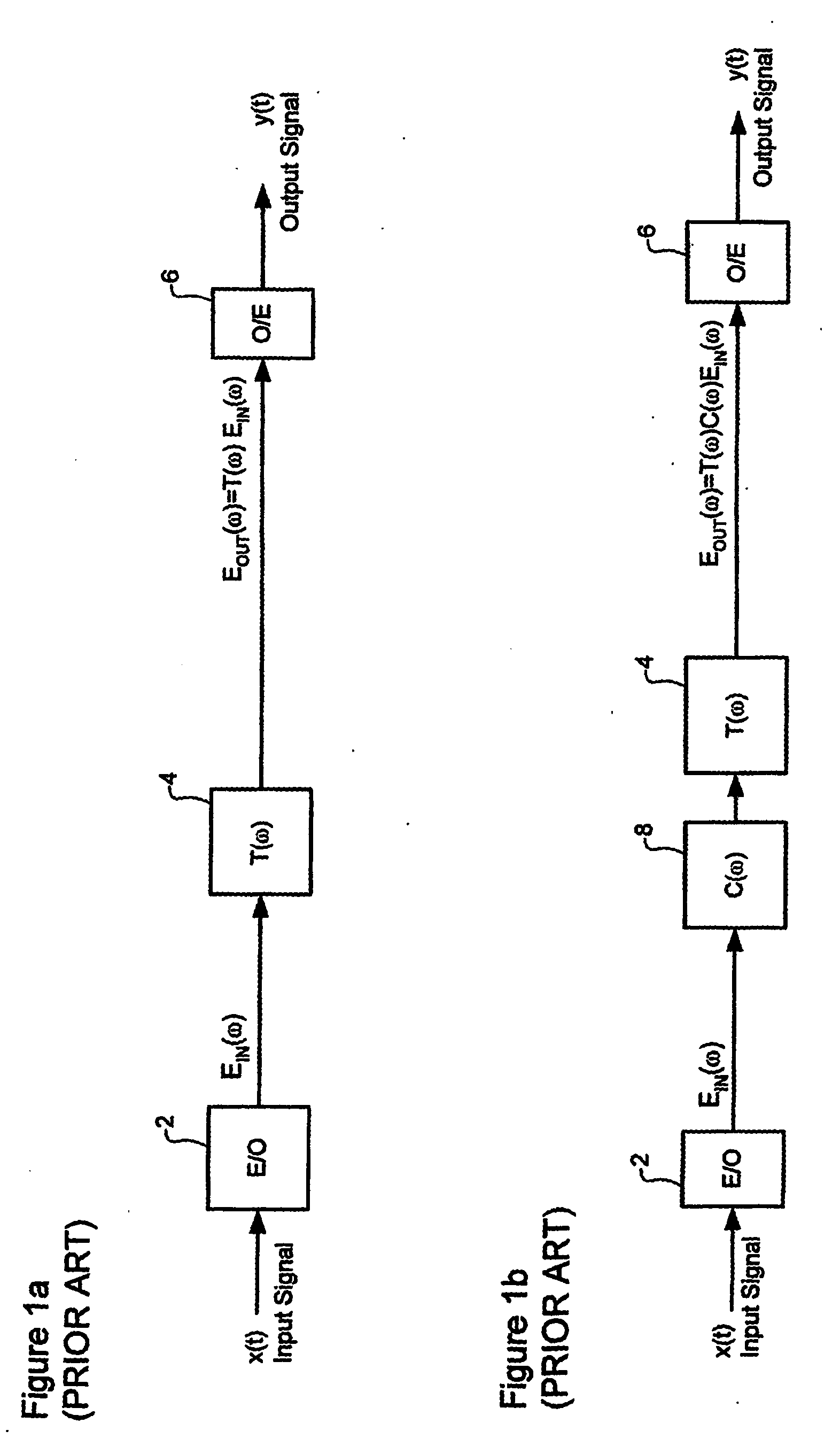Optical dispersion compesnation in the electrical domain in an optical communications system
a technology of optical communication system and electrical domain, applied in the field of optical communication system electrical domain compensation, can solve the problems of significant limiting factors of the maximum possible signal reach of noise and dispersion degradation, signal degradation due to noise and dispersion effects, and serious problems of optical fiber dispersion, so as to achieve the effect of reducing the effect of dispersion
- Summary
- Abstract
- Description
- Claims
- Application Information
AI Technical Summary
Benefits of technology
Problems solved by technology
Method used
Image
Examples
Embodiment Construction
[0040] The present invention provides a method and system for compensation of chromatic dispersion in an optical communications system. FIG. 2 is a block diagram schematically illustrating principal operations in accordance with the method of the present invention.
[0041] As shown in FIG. 2, the optical communications system is represented by electrical-to-optical (E / O) and optical-to-electrical (O / E) converters 2 and 6 separated by an optical link 4 represented by a system transfer function T(ω). In accordance with the present invention, signal distortions introduced by the system transfer function T(ω) are compensated by deriving a compensation function C(ω) that optimizes system performance. A compensation processor 10 uses the compensation function C(ω) to filter the input signal x(t) in the electrical domain, thereby producing a predistorted input signal x1(t) 12 given by:
x1(t)=x(t) conv C(ω)
where “conv” is the convolution function.
[0042] The predistorted input signal x1(t)...
PUM
 Login to View More
Login to View More Abstract
Description
Claims
Application Information
 Login to View More
Login to View More - R&D
- Intellectual Property
- Life Sciences
- Materials
- Tech Scout
- Unparalleled Data Quality
- Higher Quality Content
- 60% Fewer Hallucinations
Browse by: Latest US Patents, China's latest patents, Technical Efficacy Thesaurus, Application Domain, Technology Topic, Popular Technical Reports.
© 2025 PatSnap. All rights reserved.Legal|Privacy policy|Modern Slavery Act Transparency Statement|Sitemap|About US| Contact US: help@patsnap.com



